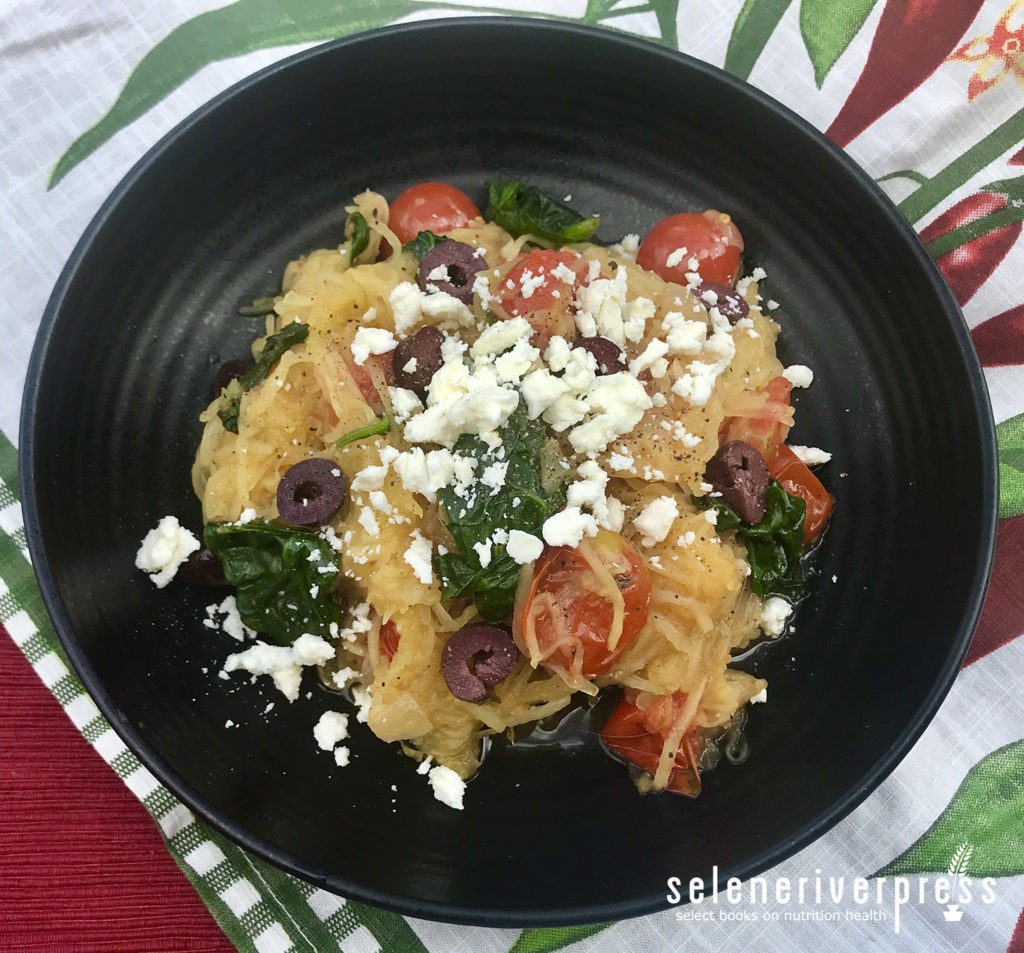One of my favorite things about autumn is the lovely array of squash that start making their appearance on the store shelves and market stalls. I love that they come in all shapes and colors, each with its own distinct flavor and texture. After the last of the summer harvest, the first of the winter squash are a real treat. While I love the warming sweetness and dense textures of heartier squash such as acorn and hubbard, for me, spaghetti squash stands out from the rest. So much so that I’d almost place it in its own category.
Spaghetti squash is known not only for its distinguishable texture—long, crisp strands reminiscent of spaghetti (hence its name)—but also for the flavor it brings to the table. Unique unto itself, spaghetti squash delivers the pleasant, mild undertone of winter squash, but with far less sweetness than other winter varieties. And if cooked perfectly, it can also have a cool, refreshing flavor, almost akin to cucumber.
With their fresh flavor, texture, and subtle hints of winter squash, spaghetti squash make a perfect bridge between the seasons—when you crave something heartier than summer fare, but you’re not quite ready for full-on cold weather food. And though I’d never try to convince you that there’s no difference between spaghetti squash and pasta, I will say that it makes a mighty fine substitute.
With that said, I prefer my spaghetti squash almost under-baked, when the strands of flesh just begin to pull apart from each other. If you cook too long, the flesh becomes sweeter, softer, and creamier in texture (more like other winter squash varieties). It’s not a problem at all, so not to worry if you miss that under-cooked window. When it happens to me, I simply move ahead with my recipe regardless.
I’m always happy eating spaghetti squash with little more than a pat of butter, Parmesan cheese, and lots of pepper—which, coincidentally, is one of my favorite ways to eat pasta as well. But I also like to create elaborate dishes for a more substantial meal. With lots of yummy Mediterranean flavors, this is one of my all-time beloved ways to serve spaghetti squash. It’s also a great way to use up any end-of-summer tomatoes that may not be enjoyable raw.
For the finest outcome, it’s key to create layers of flavor. Cook the onions slowly in lots of olive oil for deep caramelization. Add loads of garlic and even a dash of anchovy (if you like) for depth. Increase the heat, toss in the tomatoes, and let them blister and brown in spots—but limit the cooking time so they don’t break down too much. Lastly, add your final ingredients and toss just until combined. I like to serve this dish sprinkled with the feta cheese on top, but you could also spread the squash into a baking dish, or simply place it back into the squash shell to serve! Top with the cheese (add some other melty stuff if you like) and brown in the oven for a delicious, warming casserole. This makes a scrumptious side dish to grilled or roasted meat and a delicious vegetarian main course. However you serve it, this is a perfect meal to celebrate the changes in the air come fall.
Mediterranean Spaghetti Squash with Blistered Tomato, Olives, and Feta
Serves: 2 for a main course or 4–6 for a side dish
Prep time: 20 minutes
Cook time: 45–60 minutes, depending on size of squash
Ingredients
For the squash:
1 medium-sized spaghetti squash (about 4 lbs.)
Olive oil
Salt and pepper
For the blistered tomato, olives, and feta:
3 tablespoons olive oil
1 large onion, diced
4 cloves garlic, minced
2 anchovy filets in olive oil (optional)
2–3 cups cherry tomatoes
8 cups baby spinach
¼ cup kalamata olives, sliced
⅔ cup crumbled feta cheese
Salt and cracked pepper
Instructions
- Roast squash: Preheat oven to 400°F. Using a sharp knife, safely cut squash in half lengthwise (from stem to blossom end). Scoop out seeds and discard. Drizzle squash with a little oil and season with salt and pepper. Place flesh side down on a baking sheet. Cook until just tender, checking at about 20 minutes with a fork, then every 5 minutes, until strands begin to separate when you run a fork through the flesh. Once cooked through, remove from oven and set aside until cool enough to handle. When slightly cooled, use fork to remove strands from the squash shell. Set aside.
- Meanwhile, heat remaining olive oil in a large shallow pan or wok set over medium heat. When the oil is hot, add onions, then reduce heat to medium-low. Cook until onions are golden and lightly caramelized, adding a little salt to help draw out the moisture and speed up caramelization, about 10 minutes total. Add garlic and, if using, anchovy. Cook 2 minutes.
- Increase heat to medium and add tomatoes. Season with more salt and pepper. Toss tomatoes with onions and oil, then leave undisturbed for a couple minutes, until they get a little browned in areas. When tomatoes start bursting, you’re ready to add your squash.
- Add roasted squash and spinach to tomato mixture and toss well to combine. Cook until spinach wilts, about 2–3 minutes. Add olives and toss to combine. Season the whole thing well with salt and lots of cracked pepper, and then transfer to serving bowls.
- Top with crumbled feta and serve hot. (Alternatively, spoon squash mixture into empty squash shell or baking dish. Top with feta and other cheese of your choice, if desired, then bake at 400°F until lightly browned, about 20 minutes.)
Image from Briana Goodall.



